 |
 |
 |
 |
 |
 |
 |
|
 |
|
|
 |
|
3.5 Other Examples. Let us consider a few examples based on polyhedra. The first is an object made with cubes. I started with a set of two linked cubes as in Figure 14. |
|
|
 |
|
|
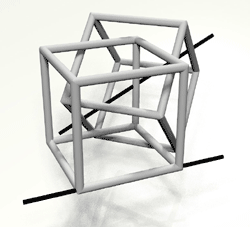 |
|
|
|
|
|
|
| In both cubes (Fig. 14) a line is added to indicate where a next set of cubes is to be placed. To go from one marked edge to the other marked edge you need the combined tranformation of translation and rotation. And after adding more sets of linked cubes the result is an object that can be seen as a combination of two strings of cubes, spiralling around each other (Fig 15). |
|
|
Figure 14: Two Cubes.
|
|
|
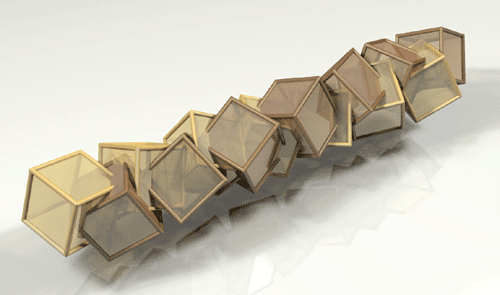 |
|
 |
|
|
Figure 15: Spiraling Cubes.
|
|
| In the next example the dodecahedron is the basic element to which the Swing Translation was applied. In the final object only a part of the spiralling edges are left to create an open structure. |
|
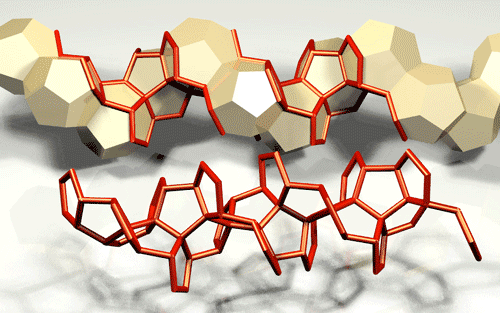 |
|
|
|
Figure 16: Spiraling Pentagons.
|
|
| The object in Figure 17 may look like a set of linked cubes. But when you take a closer look you may see that it is a string of linked squares. The ground plan for the object is the 9,2 star polygon as can be seen in Figure 18. When spiralling around the squares get entwined and we get the nice suggestion of the linked cubes. |
|
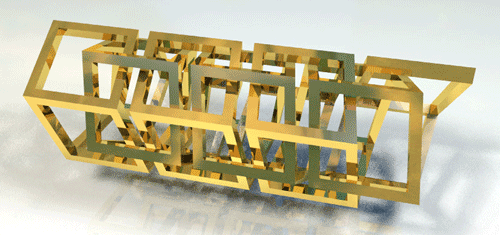 |
|
|
|
 |
|
|
Figure 17: Squares on the edges of star polygon.
|
|
|
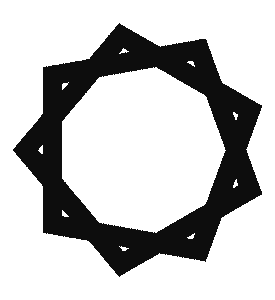 |
|
|
|
Figure 18: Plan.
|
|
|
References
|
|
[1] Doris Schattschneider, Visions of Symmetry - M.C. Escher, W.H. Freeman and Company, New York. 1990.
[2] Pugh, Polyhedra - A Visual Approach, Dale Seymour Publications, Palo Alto. 1976, 1990.
[3] Carlo Pedretti, Leonardo Architect, Rizzoli International Publications, New York. 1985. |
|
|
|
|
|
|
|
|
|
|
|
|
|
|
|
|
|






